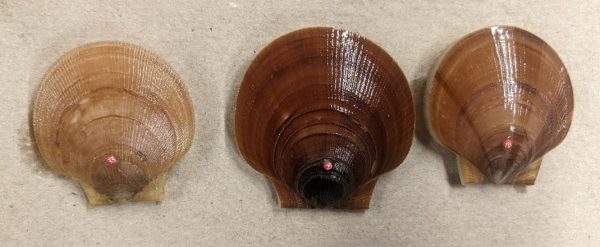This project is funded by the National Science Foundation (NSF), Marine Geology and Geophysics, and is titled “Collaborative Research: Using multi-proxy paleo data to constrain natural and anthropogenic hydrographic variability in the Gulf of Maine System over the last 250 years”.
In early June 2022, the ocean acidification experiment that had been taking place for 20+ weeks ended. Diana Thatcher traveled to the Schiller Coastal Studies Center (SCSC) at Bowdoin College and, along with researchers at SCSC, carefully weighed and measured all organisms that had been grown in the controlled pH and temperature environments. This experiment would not have been possible without the tremendous support of the researchers at SCSC – Michèle LaVigne, Heidi Franklin, Katherine Guay, and Caroline Godfrey. The bivalves grew considerably during the course of the experiment. This will provide material for the next steps of the project – analyzing the shell material for oxygen, carbon, nitrogen and boron isotopes.


